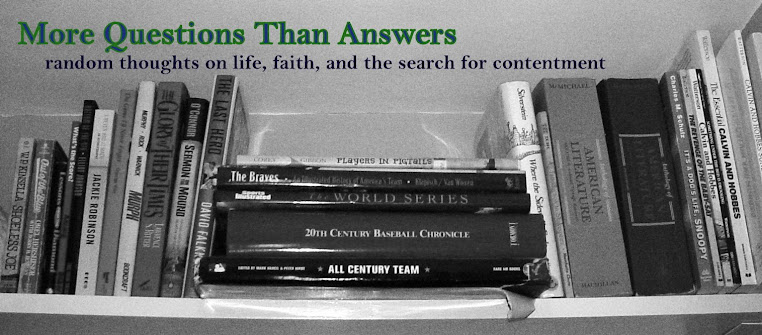 I received a copy of the Book of Mormon from a friend and have begun reading with hopes to better understand the LDS church and in particular to gain insight into the divide between my traditional Christian faith and the faith of my friend. Thus far, I have only read the introductory pages which gives a brief history of the writings and First Nephi, the first book of the LDS Scriptures. I admit my approach is not from a seekers vantage point, so I'll try to be fair. My goal is not an effort to prove anything but simply to dig around and pose questions. Questions stir up thoughts, feelings, and remind us of personal experiences which in turn promote dialogue and personal reflection.
I received a copy of the Book of Mormon from a friend and have begun reading with hopes to better understand the LDS church and in particular to gain insight into the divide between my traditional Christian faith and the faith of my friend. Thus far, I have only read the introductory pages which gives a brief history of the writings and First Nephi, the first book of the LDS Scriptures. I admit my approach is not from a seekers vantage point, so I'll try to be fair. My goal is not an effort to prove anything but simply to dig around and pose questions. Questions stir up thoughts, feelings, and remind us of personal experiences which in turn promote dialogue and personal reflection.On to the review, beginning at the introduction which gives an extremely brief account of how the writings came about and concludes with an appeal to accept the testimony found within. Right away there is a big question that arises. That question derives from the statement,
The record is now published in many languages as a new and additional witnessOn what basis is salvation granted? This statement from the introduction makes salvation seem highly conditional. Those conditions being to "come unto him" and to "obey the laws and ordinances of his gospel," although if met doesn't seem to secure salvation as the statement ends with a hint of uncertainty. There are a few passages in the New Testament that limit the conditions of salvation to one, that being grace. How can this apparent difference be explained especially since the introduction to the Book of Mormon identifies itself as "holy scripture comparable to the Bible"?
that Jesus Christ is the Son of the living God and that all who will come unto
him and obey the laws and ordinances of his gospel may be saved.
The formation of the LDS movement quickly emerges in 1 Nephi, the first book. Nephi makes the argument of how he and his fathers are set apart from the Israelite nation that emerged from Egypt and were lead into the promised land, that is Canaan and later Jerusalem. Apparently the people of Jerusalem wavered in their obedience to God with "hardened hearts" and "iniquity" and the faithful were lead out in preparation for Jerusalem's destruction. Nephi writes in chapters 17 & 18 the account of God's instruction to build a ship which would lead the faithful across the sea to a "promised land." Is the promised land the Americas? If so, how would this historical account fit into basic, generally accepted American history? The introduction made a point to say that the Lamanites were Jerusalem refuges and direct ancestors of the American Indians. The religion of the Native Americans is no where near similar to the Mormon faith or of traditional Christian faith which begs the question, "What went wrong?"
This narrative authored by Nephi are of course his writings concerning the history of his days. These writings were inscribed on "plates" for preservation I presume. The formation of the various plates seems a bit confusing. Immediately in chapter 1 Nephi begins with his personal history which clearly shows that he is documenting for a purpose; making permanent for an audience both present and future. But chapters 3 thru 5 describe Nephi's successful attempt at capturing brass plates at the command of God. Whose writings are preserved on these plates? Are these writings published as another book(s) in the Book of Mormon? In chapter 9, Nephi outlines the plan for the creation of two sets of plates that he would author. Seemingly, Nephi is finding holy plates and authoring them. I suppose as I read more of the LDS scriptures I will find answers to these questions concerning the plates.
To conclude, what little I have read so far is interesting. I want to say again that my hope is not to be an arrogant Bible thumper but to give a critical analysis so that even I can be sharpened and moved to a greater and heightened understanding of my own relationship with Christ. I look forward now to Second Nephi.

No comments:
Post a Comment